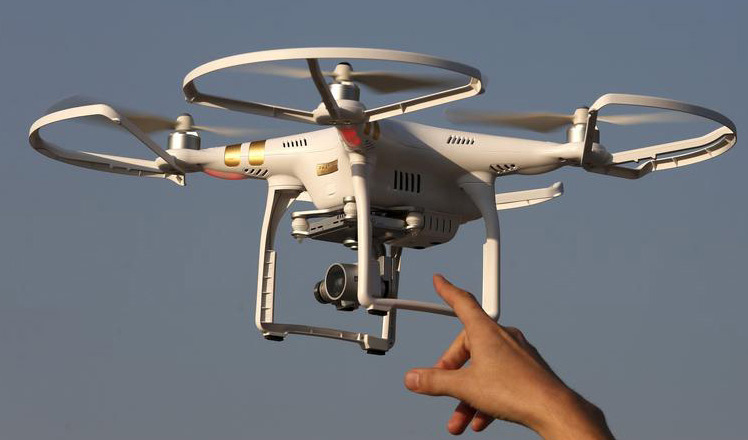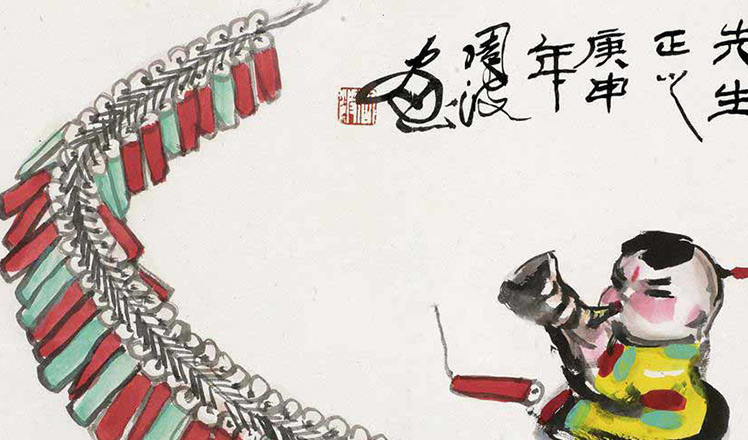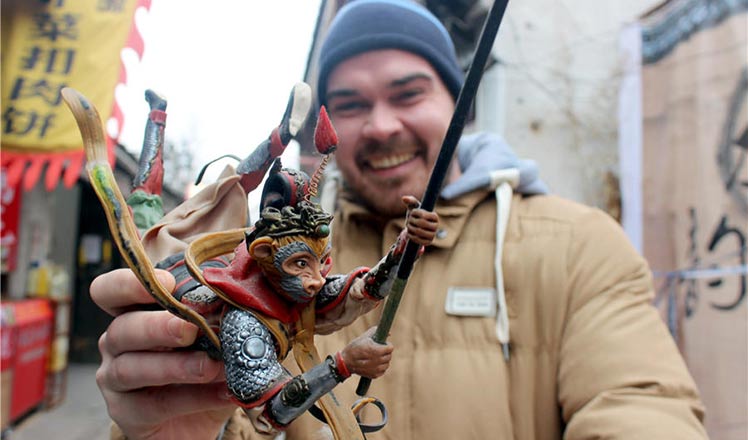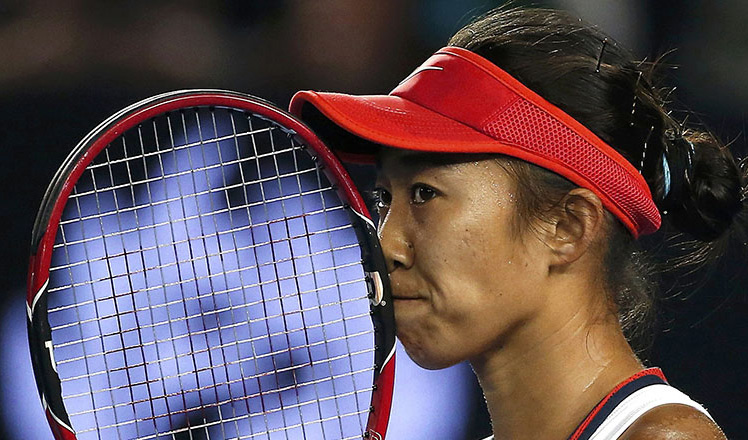In Las Vegas: ‘The Chinese have arrived’
Updated: 2016-01-09 01:16
By Hezi Jiang(China Daily USA)
|
|||||||||
 |
|
iPAL robot was designed as a companion for children. There are boy and girl models developed by Nanjing-based AvatarMind. HEZI JIANG / China Daily |
Anyone looking for evidence that China is a major presence at the world’s largest electronics show this week didn’t have to roam the cavernous Las Vegas Convention Center. All they needed to do was listen.
“It’s the first time I’ve heard Chinese in the show announcements,” said Qian Dongqi, who said he has been coming to the show for nearly 10 years.
Or look at the numbers: More than 1,100 Chinese companies, an increase from 550 last year, making up about one-third of all the exhibitors on the 22,967 square meters of the exhibition area, the largest space in the show’s 49-year history.
“Make no mistake — the Chinese have arrived,” Tim Bajarin, president of Creative Strategies, said in a recent Tech.pinions blog post. “They plan to disrupt the traditional CE players as much as possible and take market share away from them fast.”
For top-tier Chinese companies like Huwei Technologies Co and ZTE Corp, CES remains a place to unveil new products. For new players like AvatarMind and HandScape, the show may be their foot in the door of the international market.
“It’s not easy to nurture a brand, especially a global brand; it’s very challenging,” said Qian, chairman of Ecovacs Robotics, one of the top five brands of in-home robotics worldwide and the No 1 brand in China, that displayed its products at the show.
Big booth
Another indication of China’s presence at the show was that Chinese companies occupied sprawling booths at prime locations. The first booth that thousands of visitors saw when they entered the main hall was Intel Corp, the US semiconductor giant. Flanking that booth were major Chinese TV makers Hisense Co Ltd and Sichuan Changhong Electric Co Ltd.
Chinese companies were in every category from TVs and phones to drones and robots
The Chinese companies displayed TVs, phones, drones, robots and gadgets.
iPAL, a robot the height of a 3- or 4-year-old child, was developed by Nanjing-based AvatarMind as a companion for kids who “feel lonely sometimes” or “want a pal to play with”.
It comes in two versions: one shaped like a boy and the other a girl. iPAL can tell stories, sing songs like Old MacDonald Had a Farm while moving its head and arms and teach Chinese and English. Children can play games with iPAL because it has a sensor to detect hand gestures. A six-inch tablet on its chest runs an Android operating system to develop applications for MyPal.
The company said that soon the robot will be able to teach lessons like “Stranger Danger”, which teaches children not to get too close to strangers. AvatarMind said it also is working with a Connecticut-based company that develops robotics programs for educating children with autism.
At another booth, Tong Luo, founder and CTO of HandScape, showed an iPad case that allows users front and backside touch control of their tablet. When on, a user can see his fingers against the backside of the case, and those fingers can press down and navigate the screen as they would on the device’s main touch screen.
Among the TV makers, Hisense, which has invested heavily in the research and development of its smart TVs, announced 22 new TV models, ranging from small 720ps to curved 4K Ultra HDs.
Mark T. Viken, vice-president of marketing at Hisense USA Corp, told China Daily that Hisense’s annual revenue exceeded $16 billion in 2014. Now it is number three in the global TV market, up one spot from last year, and number two in the global 4K TV market.
Currently ranked seventh in US sales, the company said at a news conference on Tuesday that its aiming to be among the top-three TV brands in the US in three years. Hisense has also been engaged in major sports sponsorships, including NASCAR, and Formula 1 racing, and said it will be even more aggressive in its sponsorships.
ZTE, best known in China as a telecom-equipment maker, is also China’s leading mobile device manufacturer, and has made inroads in the US with affordable technologies for smartphones. It had former NBA players Larry Johnson, Larry Nance, and Adonal Foyle at its booth, along with the NBA National Championship trophy.
Thinnest laptop
Lenovo, the world’s No 1 personal computer maker, unveiled the world’s thinnest convertible laptop, YOGA 900S, ThinkPad X1 tablet, and AirClass, a virtual classroom for corporate training.
“More and more Chinese companies will become global brands. It’s hard, but I think the more successful cases there are, the easier it will become. One day we will see a boom in the number of Chinese brands,” said Yang Yuanqing, CEO of Lenovo. “Companies like us have paved the road.”
Huawei showcased its 6-inch Huawei Mate 8 smartphone, 10-inch MediaPad M2 tablet, Huawei Watch Jewel and Elegant smartwatches, and the matte gold Nexus 6P.
The new devices present a significant shift for the company, expanding its portfolio into the high-end market.
Richard Yu, CEO of Huawei’s consumer business group, said that Huawei will have a shot at being the number two smartphone maker in the world within the next two years.
“Huawei continues to grow and launch several global flagship devices each year that are focused on the premium market and integrate the best in creativity, design, fashion, photography and performance,” said Kevin Ho, president of the handset product line of Huawei’s consumer business group.
 |
|
The EHang 184 autonomous aerial vehicle was unveiled at CES in Las Vegas on Wednesday. Xinhua |
Drones galora
Shenzhen-based DJI is the world’s largest maker of consumer drones with 70 percent of the global market. In the US, the company’s largest market, customers expect the latest models to have new features, such as better cameras, better sensors and different capabilities, Adam Najberg, DJI global spokesman, told China Daily.
At the show, DJI launched a new software development kit and unveiled a new drone Phantom 3 4K, a 4K Wi-Fi edition of DJI’s popular easy-to-fly Phantom 3 Series with 4K aerial camera.
With the increasing popularity of drones, the market is very competitive even within China, he said, and what moves DJI forward is its ability to sustain innovation.
“There are more of them (Chinese companies) selling into the UAV (unmanned aerial vehicles) sector than ever before,” said Najberg. “But I think in a few years you’ll see a shakeout because the other companies, maybe they are one-or-two-product companies, are unable to come up with the next big thing.”
One company that eventually wants to sell in the manned aerial vehicle market unveiled what it calls the world’s first self-flying drone capable of carrying a passenger .
The electric-powered Ehang 184 with four rotors, created by Guangzhou- based company Ehang, has a small cockpit in the middle for one passenger. The passenger does not manually pilot the drone, which can only take off and land, but enters a location in an app and the EHang follows it.
The company said Ehang 184 can fly for 23 minutes after two hours charging time, and is designed to fly fairly low, at altitudes of between 300 to 500 meters (1,000 to 1,640 feet) at top speed of 63mph. Ehang said that the 184 had undergone more than 100 test flights at low altitudes near Guangzhou and carried a passenger a number of times.
While most attention at the show was on high-tech gadgets, some smaller Chinese companies displayed simple products.
Miracase International Ltd from Shenzhen showed its newly designed cycling backpack with an LED signal light.
“We came last year, and we are here again this year. Each time we bring some innovative products tailored for the US market, looking for potential sellers and distributors,’’ said CEO Kent Wang.
Tong Luo of Handscape said that low-production costs in China make
innovative products possible.
He said that Handscape spent about $1.2 million in the US to make its first prototype of the case. “When we do the second generation, we wanted to change the chips, and we just couldn’t afford to do it here,” he said. “With our China background, we were able to get a Shenzhen team to do industrial engineering, mechanical engineering, circuit board design, layout, firmware, software. It’s all going on in China at a very affordable cost.”
While many China-based companies are making innovative products, they face challenges in selling in the US because their brands are unfamiliar to consumers. Ablikim Ablimit, Le Holdings’ vice-president of strategic planning and management, said many Chinese companies have not designed their current products with the next-generation in mind.
He also said the electronics show itself has shifted from “the age of function” to “the age of experience”, which means a device with well-designed features will not be sufficient to satisfy a customer’s needs.
“When everyone has a smartphone and a TV also called ‘smart’, they [consumers] will not be content with products with enhanced performance alone,” said Ablimit. “So I think CES will shift to focusing more on the customers’ overall experience, including content, app development and platform support.”
Show shifts
He said China was leading “cross-border innovation” in the world thanks to its more than 700 million Internet users and its electronics manufacturing capability. “More and more Chinese companies are expected to appear in the future CES with cross-border products,” he said.
While Chinese companies compete fiercely with global brands, they also collaborate.
At the CES, China’s equivalent of Netflix, Letv, announced collaboration on car technology for the California-based electric-car company Faraday Future and luxury British sports-car manufacturer Aston Martin.
Chinese e-commerce platform JD.com entered into a strategic cooperation agreement with US audio-equipment company Harman. The first product to be launched under the partnership will be the JBL Go Smart, a voice-activated wireless Bluetooth speaker that allows users to activate other appliances across the JD Smart platform.
Contact the writer at hezijiang@ chinadailyusa.com
Linda Deng, Amy He and Lia Zhu contributed to this story from Las Vegas.
- A glimpse of Spring Rush: little migrant birds on the way home
- Policy puts focus on genuine artistic students
- Police unravel market where babies are bought, sold as commodities
- More older pregnant women expected
- Netizen backlash 'ugly' Spring Festival Gala mascot
- China builds Mongolian language corpus
- 2 Chinese nationals killed, 1 injured in suspected bomb attack in Laos
- New York, Washington clean up after fatal blizzard
- 'Plane wreckage' found in Thailand fuels talk of missing Malaysian jet
- Washington shuts down govt, NY rebounds after blizzard
- 7 policemen, 3 civilians killed in Egypt's Giza blast
- Former US Marine held in Iran arrives home after swap

 Drone makers see soaring growth but dark clouds circle industry
Drone makers see soaring growth but dark clouds circle industry China's Zhang reaches Australian Open quarterfinals
China's Zhang reaches Australian Open quarterfinals
 Spring Festival in the eyes of Chinese painters
Spring Festival in the eyes of Chinese painters
 Cold snap brings joy and beauty to south China
Cold snap brings joy and beauty to south China
 The making of China Daily's Tibetan-style English font
The making of China Daily's Tibetan-style English font
 First trains of Spring Festival travel depart around China
First trains of Spring Festival travel depart around China
 Dough figurines of Monkey King welcome the New Year
Dough figurines of Monkey King welcome the New Year
 Ning Zetao, Liu Hong named China's athletes of the year
Ning Zetao, Liu Hong named China's athletes of the year
Most Viewed
Editor's Picks

|

|

|

|

|

|
Today's Top News
National Art Museum showing 400 puppets in new exhibition
Finest Chinese porcelains expected to fetch over $28 million
Monkey portraits by Chinese ink painting masters
Beijing's movie fans in for new experience
Obama to deliver final State of the Union speech
Shooting rampage at US social services agency leaves 14 dead
Chinese bargain hunters are changing the retail game
Chinese president arrives in Turkey for G20 summit
US Weekly

|

|









